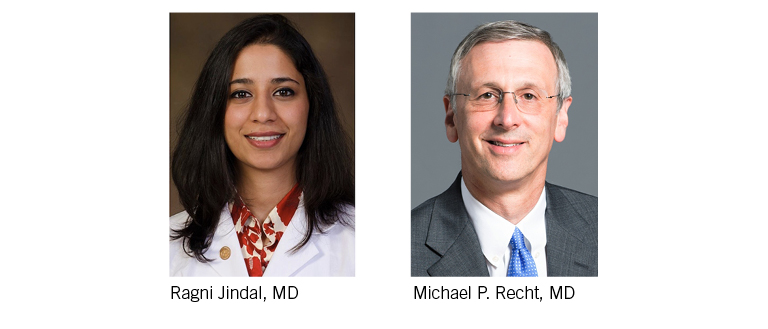During the peak of the pandemic in New York City, the radiology team at NYU Langone Medical Center was searching for ways to keep educating their trainees outside the clinic. Michael P. Recht, MD, Louis Marx professor and chair of the department of radiology at NYU Langone, spoke with Ragni Jindal, MD, a radiology resident at NYU Winthrop Hospital, about how the team’s simulated daily readouts (SDR) project helped the residents maintain their educational experience during a chaotic and uncertain time.1
What was the inspiration behind building the SDR project?
With the COVID-19 crisis, our volume of imaging cases had reduced significantly due to national recommendations to postpone non-urgent medical care. We believed it was probably going to stay low for a prolonged period of time. Additionally, the case mix had changed significantly. For example, even though our chest CT volume was relatively well-maintained, the pathology mix had decreased as almost all cases were COVID-19 patients.
To determine strategies to keep educating our residents, I first met with our program directors and the vice chair of education at NYU Langone. Although a number of possibilities were considered, we decided that the best solution would be to create the SDR, using previously interpreted studies. Although we understood the value in dictating live cases — such as acute patient management and interaction with other physicians — we believed this was the best solution. Another advantage of the SDR was its ability to allow residents and faculty to access the cases remotely, which allowed us to maximize social distancing and maintain patient and staff safety.
How did the project come to fruition?
To implement the SDR, we needed to gather four months’ worth of cases — both images and reports. We then had our faculty choose the best cases to replicate the normal experience of a live daily readout. We chose a mix of modalities and pathologies, both normal and abnormal, for every rotation. All cases were anonymized and divided into a month’s worth of daily worklists. The worklists were then placed on a separate educational instance of our PACS. In addition, we created a separate educational instance of our reporting system. All of this took significant effort and hundreds of hours of work. It was an incredible team effort.
What challenges did you overcome?
When you start a project like this, the question becomes how to effectively communicate the idea to your team to get them engaged. The first time I described the project to our IT team, their response was, “What do you want us to do again?” The second conversation I had was with the section heads and resident representatives. They also raised a number of concerns about feasibility. However, once we explained the project in detail and the reasons why we felt it was so important, everyone became equally passionate and committed to making the SDR a reality.
Of course there were significant technical challenges that had to be overcome in a very short time period. Anonymizing thousands of cases, setting up the educational instances of PACS, and solidifying our reporting system so there was no interference with our production systems posed challenges. We also had to provide duplicate lists when there were multiple residents on the same rotation so they were able to do the same cases without interfering with each other. Obtaining patient histories and relevant prior information was also a challenge.
How has this project impacted your institution?
Although it was meant to be a solution to what we hope will be a short-term problem, it will serve as an excellent resource for residents to prepare for upcoming rotations or review past ones. Once our case volume and mix of pathology returns to normal, we will make the official reports for all the cases available. This will allow our residents to review cases as unknowns but then be able to check their interpretations with the official ones.
The SDR cases can also be used to supplement the cases seen in live readouts. This will be especially helpful for unusual pathologies that may not occur during each resident’s rotation. For example, in pediatric radiology we don’t see a lot of tumors. Now, we can incorporate tumor cases from the SDR worklists into our daily readout. The possibilities are going to be endless.

